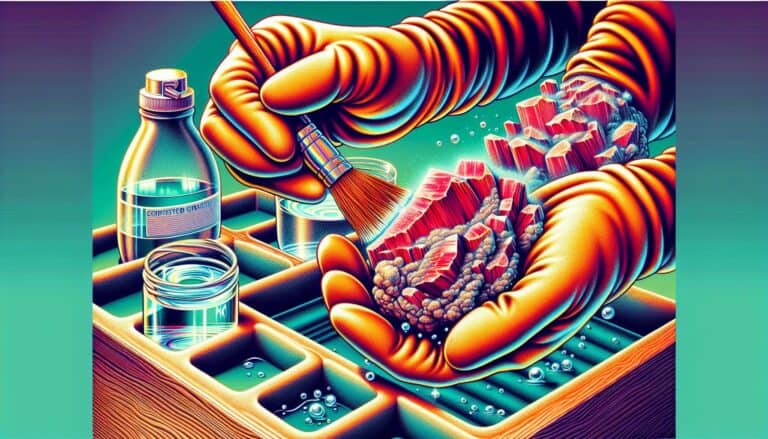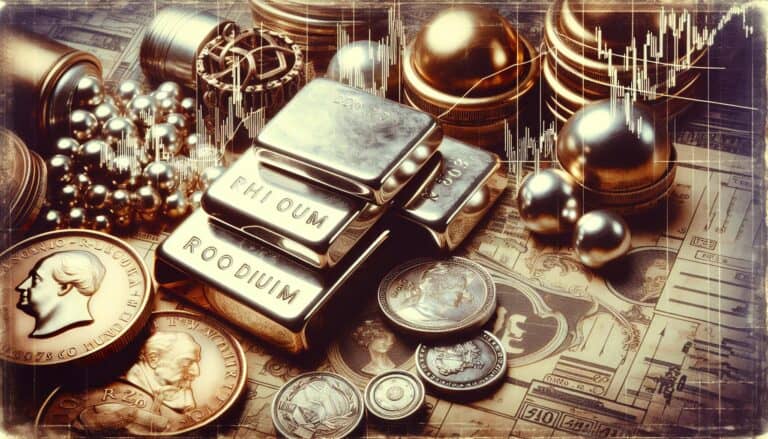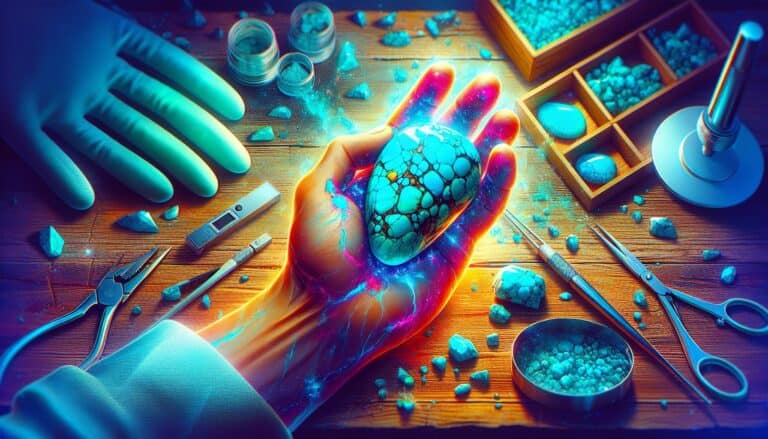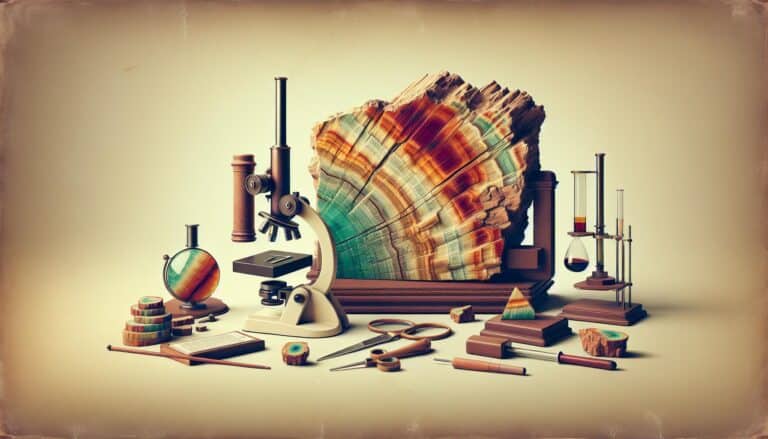Ever found yourself mesmerized by the captivating hues of labradorite?
This stunning gemstone, with its unique play of colors, can be a showstopper in any jewelry collection. But before you dive into your wallet, you’re probably wondering, “How much is labradorite really worth?”
The value of labradorite can vary widely, and there’s no one-size-fits-all answer. Factors like color intensity, labradorescence, and the stone’s size all play a crucial role in determining its price tag.
Whether you’re a collector, a jewelry enthusiast, or simply curious, understanding these factors is key to knowing what you should pay for this iridescent beauty.
Labradorite value is influenced by labradorescence intensity, color, clarity, and cut quality. Vivid colors and strong labradorescence command higher prices. Market demand, rarity, and provenance also impact value. When buying, consider reputable sellers and ensure authenticity, often verified through certificates.
What Is Labradorite?
Labradorite is a captivating feldspar mineral that you may have encountered in high-quality jewelry or as a specimen in collections. This unique mineral can display an iridescent effect, known as labradorescence, which is responsible for its popularity and appeal. Primarily found in mafic igneous rocks, labradorite can range in color from grey to green, blue, and even yellow, depending on the light and angle of view.
Labradorescence is the cornerstone feature that sets labradorite apart from other minerals. This phenomenon occurs due to light interference with the microstructures within the stone, resulting in a spectrum of colors that shimmer and change. The intensity of this effect greatly influences the value of the labradorite, as the more vivid and dynamic the colors, the more prized the stone.
Aside from its mesmerizing optical properties, labradorite has a Mohs hardness rating of 6-6.5, making it suitable for various jewelry applications. When polished and cut, especially into cabochons, the beauty of the stone is enhanced, showcasing the full splendor of its color-shifting abilities.
With origins traced back to Labrador, Canada, labradorite has also been uncovered in other countries around the world, such as Australia, Madagascar, Norway, and the United States. The stone’s historical significance is noteworthy; it’s been treasured by the Inuit people for centuries and used in indigenous ceremonies.
In the gemstone market, labradorite’s value is affected not only by aesthetics but also by its locality. Stones with a clear provenance from famous mining areas may command higher prices due to their authenticity and traceability. As you delve deeper into the world of gemstones, understanding the origin and characteristics of labradorite will enrich your appreciation for this enigmatic stone.
Labradorite Prices: Factors That Affect Value

When you’re seeking to understand the worth of labradorite, it’s essential to look at various factors that play a crucial role in determining its value. These include the gemstone’s appearance, the market demand, and its overall availability.
Color, Clarity, and Cut Quality
Labradorescence, the defining quality of labradorite, translates directly to the stone’s value. The intensity and quality of this phenomenon are paramount; stones that exhibit a full spectrum of vibrant colors typically fetch higher prices. Keep in mind:
- Color: A high-quality labradorite will display vivid blues and greens; however, spectrums that include purples and oranges are often more prized.
- Clarity: While labradorite isn’t known for its clarity in the same way diamonds are, stones that are free of inclusions or cracks that can disrupt the labradorescence are more valuable.
- Cut Quality: The cut of a labradorite should maximize the stone’s natural play of color. Expert cutters can influence the intensity of labradorescence with their skill, and thus a well-cut labradorite can have a higher price tag.
Market Demand and Availability
The market demand for labradorite fluctuates, which impacts its price. As fashion trends evolve, so does the popularity of certain gemstones. The following points are key:
- Fashion Trends: Labradorite has gained popularity in bohemian and artisan jewelry, causing demand to spike at times.
- Availability: Rarity influences value—the more scarce the stone, the more it’s worth. While labradorite isn’t considered rare, high-quality pieces with exceptional labradorescence are not as common.
Locality also plays a part in determining labradorite’s value. Stones from certain regions may be considered more desirable due to unique characteristics associated with that locality. Remember, the gemstone market is subject to change, so staying informed about current trends is beneficial for gauging labradorite’s worth.
Understanding Labradorite: A Rare Gem

The Rarity of Labradorite
Labradorite isn’t just your ordinary gemstone; it’s a captivating mineral that has intrigued jewelers and collectors alike. When you’re looking to understand the value of labradorite, the first thing to consider is its rarity. Unlike diamonds or rubies, labradorite is not widespread and occurs in few locations around the world. This relative scarcity is partly why labradorite has become such a sought-after stone.
Key factors influencing labradorite’s rarity include:
- Limited geological presence
- Specific conditions for formation
- Fewer high-quality deposits
As these conditions must align perfectly for labradorite to form, finding pieces that exhibit the full range of its iridescent beauty is quite rare. This scarcity elevates the stone’s worth, especially when the famed labradorescence shows brilliant and complete spectrums of color.
Origins and Characteristics
Tracing back to its roots, labradorite was first identified in Labrador, Canada; however, subsequent deposits have been found in countries such as Finland, Madagascar, and Australia. Each locale bestows its own unique touch to the gemstone’s appearance, affecting aspects such as color intensity and the quality of labradorescence.
The characteristics that set labradorite apart include:
- Unique color spectrum
- Iridescent labradorescence
- Hardness score on the Mohs scale
- Versatility in jewelry making
With a Mohs hardness rating of 6-6.5, labradorite strikes a balance between durability and malleability, making it possible for artisans to craft it into various jewelry pieces. Under direct light, the gemstone exhibits an impressive play of colors, ranging from vivid blues and greens to dazzling oranges and yellows. The angle of light and the cut quality significantly affect this display, ensuring that each piece of labradorite is distinctively its own.
So, whether you’re marveling at a piece of labradorite jewelry or considering it as an investment, remember that its allure lies beyond the superficial. Every aspect, from its scarcity to the geological tale it tells, contributes to its overall value. When assessing labradorite’s worth, keep in mind the depth of its rarity and the magic within its origins and characteristics; these elements define its unique charm and enduring appeal.
Labradorite Grading and Valuation
The Grading System for Labradorite
When you’re exploring the worth of labradorite, it’s crucial to understand the grading system that defines its quality. Unlike diamonds, which follow the strict parameters of the 4Cs (cut, color, clarity, and carat weight), labradorite grading is less standardized and centers on its unique features.
Labradorescence is the most notable trait, with intense, full-spectrum colors fetching higher prices. The stone’s clarity is also essential, as inclusions can detract from the desired light play. Additionally, the cut of a labradorite gem directly impacts how well labradorescence is displayed, making skilled craftsmanship a valuable aspect of grading.
The body color and background darkness of the stone often work in tandem with labradorescence. A darker base typically enhances the visible color effect, which can raise the stone’s value. Transparency is another grading factor; the more transparent the stone, the more desirable it usually is, provided it still showcases a strong play of color.
Certification and Appraisal
For an authoritative assessment of labradorite’s worth, you’ll need to seek certification and appraisal from reputable gemological organizations. A certified gemstone means it’s been scrutinized by professionals who document its characteristics and confirm its authenticity.
When seeking appraisal, ensure it’s done by a certified gemologist with experience in colored stones. They’ll consider the labradorite’s weight, color intensity, clarity, cut quality, and labradorescence, looking at the stone both in natural light and under specific viewing conditions. Here’s a snapshot of valuation parameters:
| Factor | Description | Impact on Value |
|---|---|---|
| Labradorescence | Quality of the color play | High |
| Clarity | Presence of inclusions | Medium to High |
| Cut | Faceting and shape precision | High |
| Base Color | Color of the stone without color play effect | Medium |
| Transparency | Level of light passage through the stone | Medium to High |
Remember, the market value can vary significantly based on current trends, regional demands, and the individual characteristics of each stone. So, while these factors are guideposts, the final worth of a piece of labradorite is often determined by all variables combined, viewed through the lens of the market’s ever-changing tastes.
Current Market Trends in Labradorite Pricing
Labradorite’s popularity ebbs and flows with fashion trends and holistic interests. As you’re considering the purchase or sale of labradorite, staying abreast of these trends is crucial. Gemstone enthusiasts and designers often drive the demand, which can significantly raise the value of high-quality labradorite stones. In recent years, an increased interest in the stone’s metaphysical properties has also boosted its market value.
Celebrities and Influencers wearing labradorite jewelry can create a surge in demand. Whenever a public figure is seen flaunting a labradorite piece, aficionados rush to add similar items to their collections, betting on the stone’s distinct allure. This is especially true for pieces that display exceptional labradorescence, making them highly sought after.
To quantify these trends, it’s beneficial to look at the pricing data over time. For instance:
| Year | Average Price per Carat (USD) |
|---|---|
| 2021 | $1.50 – $5.00 |
| 2022 | $2.00 – $6.00 |
Note how prices have seen an uptick, reflecting growing consumer interest. However, there’s also a wide range in the per-carat cost, which ties back to the individual stone’s characteristics covered earlier.
Exclusivity also impacts labradorite’s value. Limited-edition jewelry pieces or stones from rare locations can command premium prices. Additionally, pieces by renowned jewelry designers or from coveted collections often have an increased price point, regardless of intrinsic stone value.
In the broader market, there’s a nuanced picture. Wholesale prices fluctuate with mining output and import-export regulations. Regions where labradorite can be mined more abundantly and with fewer restrictions may see a dip in prices, while those with limited production may report an increase.
Keep an eye on international currency fluctuations as well. These can affect how much labradorite is worth when buying or selling on the global market. If your local currency strengthens against the currency of major suppliers, the cost for you could be more favorable.
The Most Expensive Labradorite
When you’re on the hunt for the crème de la crème of labradorite, you’ll find that the most expensive pieces are those that display an exceptional play of colors. High-grade labradorite, known for premium labradorescence, can fetch steep prices, particularly when size and quality intersect.
Top-tier labradorite boasts a full spectrum of vibrant hues that dance across the surface with every movement. It’s not just the blues and greens commonly seen; the rarest labradorite reflects the entire rainbow. Elite specimens might even flash colors like orange and yellow, which are significantly tougher to find.
Another critical factor is transparency. The more transparent the labradorite, the more valuable it is considered, as the light can penetrate deeper, enhancing the stone’s mesmerizing effect. These striking features captivate gem collectors and may push the value of a single specimen into thousands of dollars, especially for larger, more transparent stones.
Size does matter when it comes to labradorite’s worth. Large, museum-quality pieces, often used as statement showpieces or in grandiose installations, command top dollar due to their rarity and the impact of their beauty. In contrast, smaller but equally magnificent stones are highly sought after in the luxury jewelry market.
The origin of labradorite also plays a part in its value. Stones hailing from Madagascar and Finland are particularly esteemed for their quality and color intensity. Desirable pieces from these localities come with a heftier price tag, as they’re often deemed superior to those found elsewhere.
In the realm of labradorite, the factors that contribute to its cost are as layered as the stone itself. Recognizing the characteristics that denote a high-value piece will guide you in understanding what drives the prices skyward for the most remarkable examples of this enchanting gemstone.
Buying Labradorite: Tips and Recommendations
As you navigate the waters of purchasing labradorite, it’s crucial to know where to find high-quality pieces and how to verify their authenticity. This segment arms you with pro tips and recommendations that’ll ensure you make an informed decision.
Where to Purchase High-Quality Labradorite
When you’re on the hunt for top-notch labradorite, specialist gemstone stores and reputable online marketplaces are your best bets. These outlets often provide a vast selection that allows you to compare different specimens.
- Look for sellers who offer detailed information about the labradorite’s origin and characteristics
- Check for high-resolution images or videos that showcase the stone’s labradorescence
- Read customer reviews and find sellers with high ratings and positive feedback
- Attend gem fairs or visit local jewelers where you can see and handle the stones in person
Opting to buy from established gemstone dealers guarantees a higher level of transparency regarding the quality and source of the gemstones.
Ensuring Authenticity and Value
The value of labradorite is closely tied to its authenticity. Here are some ways to ensure you get what you pay for:
- Ask for a certificate of authenticity from a recognized gemological institute
- Inquire about the stone’s grading report, which should detail all aspects of quality
- Understand the return policy in case the labradorite does not meet your expectations upon inspection
- Consider getting an independent appraisal to double-check the stone’s value
Remember, your due diligence plays a significant role in guaranteeing that your investment in labradorite brings both joy and value. By keeping these pointers in mind, you’ll be better equipped to select a genuine and quality labradorite that holds its worth over time.
Conclusion: Buying & Selling Labradorite
Determining the value of labradorite involves much more than just its breathtaking play of color.
Your awareness of the grading system and the factors that influence its worth is essential. Remember, the true value also lies in the authenticity and certification of the stone. By following the tips for purchasing labradorite, you’re not just buying a gemstone; you’re making an informed investment. Whether you’re at a gem fair or with a local jeweler, always prioritize quality and certification.
Your due diligence ensures that your labradorite is not only a stunning addition to your collection but also a piece whose value is as clear as its iridescent glow.


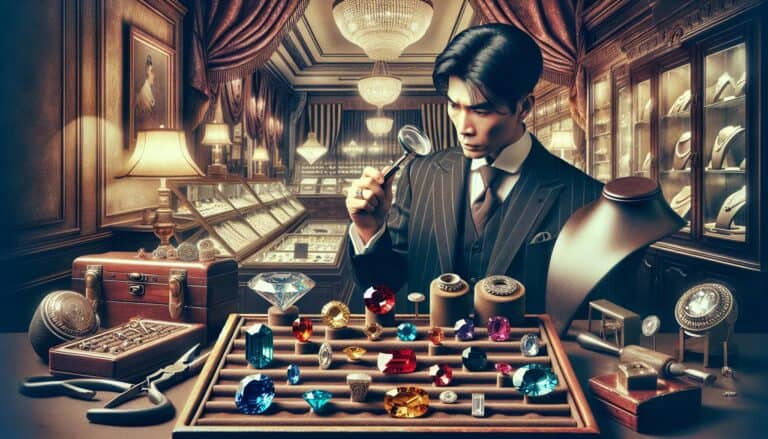
![Alaska Rockhounding Sites in [year]: Locations & Gems](https://observationhobbies.com/wp-content/uploads/2024/01/w8vGE4zrwO-0XFwKV2tuI-768x439.jpg)
